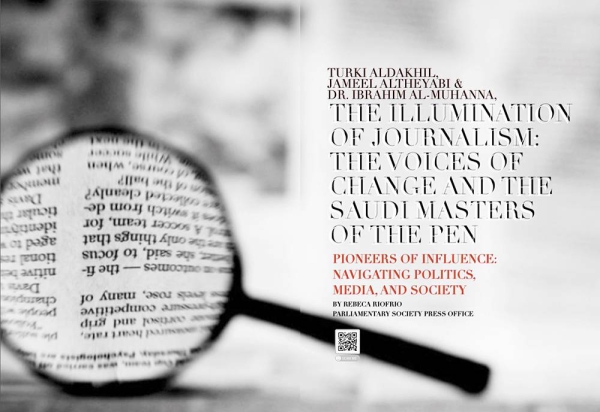
ver lockdown, says Charles Hayward, he found his thoughts turning to This Heat, the wildly influential band he played in 40 years ago. It wasn’t the Covid-fuelled atmosphere of dread and paranoia that did it, although plenty of people heard dread and paranoia in the music This Heat made between 1977 – when the wider world first became aware of the extraordinary sound made by Hayward and fellow members Charles Bullen and the late Gareth Williams thanks to a John Peel session – and 1982, when they split after their second album, Deceit. It was what he calls “the grain of sound” on TV at the moment.
“Because everyone’s doing everything from home, production values have become very interchangeable – sometimes a show can go from one sort of technological texture to another, and people aren’t batting an eyelid. You’re listening to the news, or a comedy programme and it’s jumping from one sort of grain to the other, one acoustic to another and you’re making your own connections. That is what This Heat records are.”
You take his point. This Heat specialised in crashing together disparate elements: lo-fi recordings and cutting-edge technology – their use of a harmonizer, the pitch-shifting digital effect notably deployed on David Bowie’s Low album, resulted in 24 Track Loop, an instrumental that sounds more like a piece of experimental noughties dance music than something recorded in 1979 – with free improvisation next to musique concrète-like tape experiments, funk rhythms, distorted guitar, plaintive vocals that recall Robert Wyatt, dubby soundscapes alongside beautiful if unorthodox songs. The results were like nothing else at the time: in response to listener requests to play “more music like This Heat”, Peel responded that he couldn’t because “nobody else sounds like them”.
They proved hugely influential – everyone from Massive Attack and Hot Chip to Animal Collective and Caribou has sung their praises – but the recent appearance of their back catalogue on streaming services underlines that they’re not really like anything since, either. For all their preoccupation with the political issues of the day (the paranoia and dread was snapped into focus, says Hayward, by the rise of “Thatcher and Reagan and the concept of mutually assured destruction”), their music hasn’t dated. “There’s a quote about This Heat being pre and post everything, which I liked. There wasn’t a scene that we were part of that could then be defined to that particular era,” says Bullen.
The climate of punk and post-punk gave This Heat an audience. People were now willing to listen to a band fuelled by, in Hayward’s memorable phrase, “a desire to commit violence to accepted notions of music” – but the band predated it. Hayward and Bullen started working together in the early 70s, after Hayward (once the drummer in Phil Manzanera’s pre-Roxy Music prog band Quiet Sun), placed an ad in Melody Maker. “We loved improvising, and that whole thing of accessing sounds like toys, the radio, crumpled-up paper,” says Hayward. “We liked things that rocked, but we also liked things that went all microscopic and nerve-ending. We liked it all. We were just trying to find this thing that we could hear in our heads, but we hadn’t heard yet.”
It was the arrival of “non-musician” Williams that caused the band to fully click. “Just the openness,” says Bullen. “Charles and I has a certain level of what you’d call chops, whereas Gareth didn’t have those chops as such, so he was more involved with texture and timbre.”
The trio decamped to their new rehearsal space, the grim-sounding Cold Storage. “It was a huge fridge in a disused meat pie factory – none of the electrics were working, but there were these metal walls. It had no daylight. We opened the door and there was a sort of micro-atmosphere in there, it was like you suddenly went into the tundra,” says Hayward. “There was a bit of mist floating around, there was blood-encrusted dust along all the corners and everything. It took us two weeks to clean the place up. It was chaos, but the sound of the bass drum in there was incredible.”
They rehearsed daily, devising music using conventional guitar, drums, keyboards and vocals as well as an assortment of broken toys and electronics, and tape recorders as instruments. Hayward describes the resulting sound in visual terms, mentioning Mondrian and the Victorian chronophotography of Étienne-Juley Marey: “I was thinking a lot about grids and shapes against grids, like when you see pictures of crash test dummies being hurled through space with a grid in the background. That idea of something gestural and fiery and chaotic and full of emotion, a human figure hurling through space, but against a grid. That’s how a song like Horizontal Hold feels: a very strong grid from the drum kit, but with this sort of action painting going on over the top of it.”
After a brief burst of electronic noise, Horizontal Hold opened This Heat’s eponymous debut album (known as Yellow and Blue on account of its cover). A fascinating succession of whiplash-inducing musical shifts – from grimy-sounding noise to chilling ambient passages, from spare, eerie songs to relentless funk rhythms – its sound was, Hayward says, influenced as much by the south London environment in which This Heat lived as much as their esoteric tastes.
“Just before This Heat started, I realised: it’s all folk music. All of it. Abba is folk music, Charles Ives conducted by Bernstein is folk music. So what we made was south London folk music. Deptford, Camberwell, Brixton, lots of places had either been bombed flat in the war, or had their resources sucked dry. They became overcrowded and dirty and grimy. A road like Camberwell Grove feels wider now, because the bricks are cleaner and some of the trees have been removed. But back then, it felt very claustrophobic, it felt very sooty, at points it was racist – in a clear way, not the violence of nice that we’ve got now.”
Perhaps understandably, not everyone was enamoured of This Heat’s compelling racket. Bullen remembers one gig at the Chelsea School of Artthat so divided the assembled students there was nearly a fight – but, for such uncompromising music, it found an audience. There were even people who thought it might have commercial potential. At one point, the trio found themselves supporting U2, of all bands, at the Hammersmith Palais (“I suppose genre wasn’t so tied down in those days,” Bullen says) and being courted by Blackhill Enterprises, formerly manager of Pink Floyd, then enjoying vast chart success with Ian Dury and the Blockheads. “I think they thought that we could possibly be a new Pink Floyd or something,” says Bullen. “I mean, that obviously didn’t happen, musically or sociologically or politically.”
A little unexpectedly, Hayward says, This Heat had grander ambitions, too. “I would contest that we weren’t considering an audience,” he says. “It’s all for the audience. It isn’t for itself and it’s definitely not for the players. It’s for the music, but the music includes the audience. And why it’s music and maybe not pure sound is because it’s trying to communicate, and it’s dealing with change over time to make that communication.
“We were under the impression that we were going to change everything for everybody. The quality of what it was that people wanted from [light entertainment TV show] Blankety Blank, we would shift that so that they wanted to watch [experimental drummer] Han Bennink improvising with [experimental guitarist] Derek Bailey. We were going to take the energy that was football and we were going to … do you understand what I’m getting at? We were out to change everything.”
He laughs. “I mean, it’s ridiculous – this is the stuff of being 24. But while that energy’s there, use that energy.”
Instead of turning a mainstream audience on to the sound of free improv, This Heat had to settle for cult success, gigs that became fabled for their violent intensity (“it wasn’t violent in so far as you wanted to kill people,” clarifies Hayward, “the violence was basically inside the music, a seemly place for this thing we call aggression”), and critical acclaim for their subsequent Health and Efficiency EP and their second album, Deceit. The latter manages to pull off the feat of being more approachable and melodic than their debut, but more disturbing, even harrowing, the anxiety in the music ramped up even further.
“Everything went up a notch,” says Hayward. “Some of the songs were written before Thatcher and Reagan, but they became more focused when those things started happening. We had one three-month period where rehearsing involved us sitting on chairs, not actually playing, just talking – the melodic thing on Deceit came out of that. We wanted to address the audience in a slightly different way now.”
Williams departed just after Deceit’s release. This Heat carried on for a while with new members, but “it lost its flow”, says Hayward. He still sounds a little disappointed about the original trio’s split: there were so many ideas they hadn’t explored yet, he says, talking about the potential of collaborating with folk musicians and African artists, “writing from two different angles, like a kind of cultural cubism”.
Bullen is more equivocal. “The 80s were coming in, the whole political, social musical environment. I hate the 80s. I hate most of what happened to music in the 80s. People who made good music in the 70s and started making good music again in the 90s made absolutely shit music in the 80s. The climate was wrong. It would have been an uphill struggle to carry on through the 80s.”
In fact, the trio reconvened in 2001, by which point their back catalogue had taken on an almost mythic status, but Gareth Williams was seriously ill: he died of cancer within weeks of their rehearsals. From 2016 to 2019, Bullen and Hayward played a rapturously received series of shows as This Is Not This Heat, augmented by a succession of leftfield guest musicians, Hot Chip’s Alexis Taylor and Sonic Youth’s Thurston Moore among them. They’re tight-lipped about future plans, or further archival releases: “I was told if I was asked to say ‘wait and see’,” says Bullen, who now performs as a soloist, playing a “prepared guitar”.
Hayward, meanwhile, seems to be in constant motion, an incorrigible collaborator whose work spans jazz, leftfield electronics, post-rock, free improvisation. On the phone, he fizzes with fascinating ideas, digressing to discuss everything from how music affects or is affected by the temperature of the room it’s played in, to the potential of livestreaming socially distanced gigs, to how composition and improvisation “exist on a sliding scale” – “the opening of Beethoven’s Fifth, there was a moment, the very first moment, when that was an improvisation” – to his dislike of musical snobbery.
“I always wanted to address the straightest guy in the room,” he says, harking back to This Heat. “I wanted to find ordinary people, it wasn’t for some weird squat anarcho-punk leftfield thing. People who … define music by the fact that only a few people get it. I sort of hate that attitude, really. The notion of the cutting edge, I find this absolutely arrogant. I think everybody’s on the cutting edge. I think the old lady knitting a pair of socks for her granddaughter is at the cutting edge as much as somebody doing a tribute to Pina Bausch or something, because we’re all in this moment, this moment is now. No one is ahead of anything else in this nowness.”
• This Heat’s remastered catalogue is available to download and stream, including in 24-bit versions.












